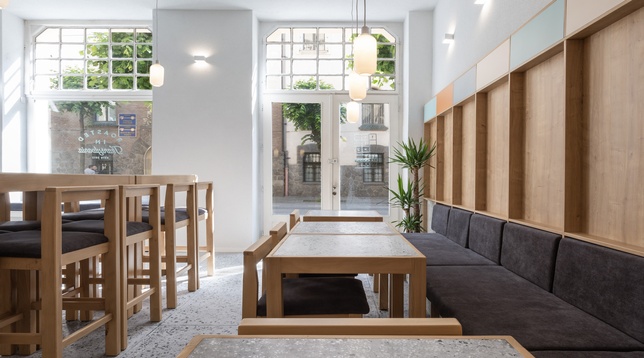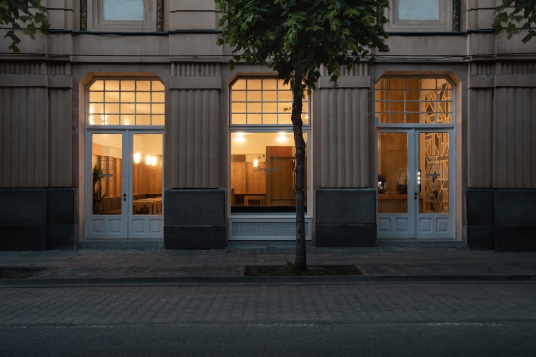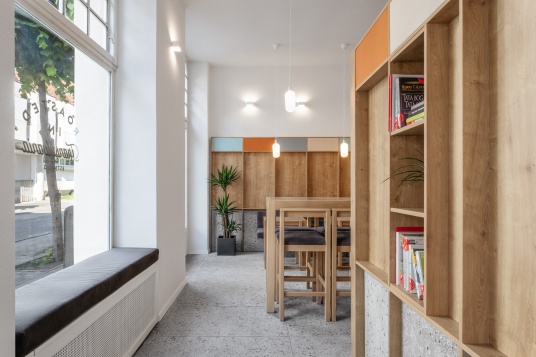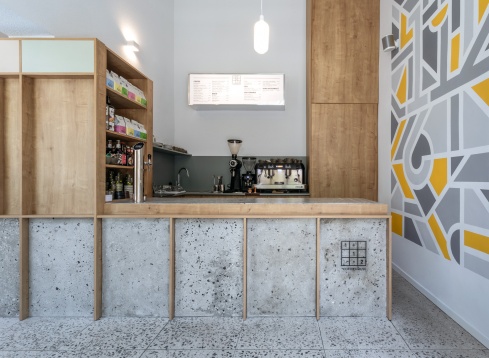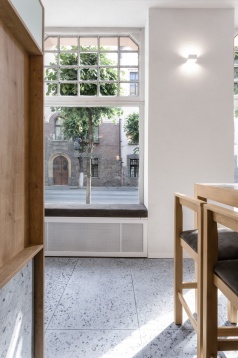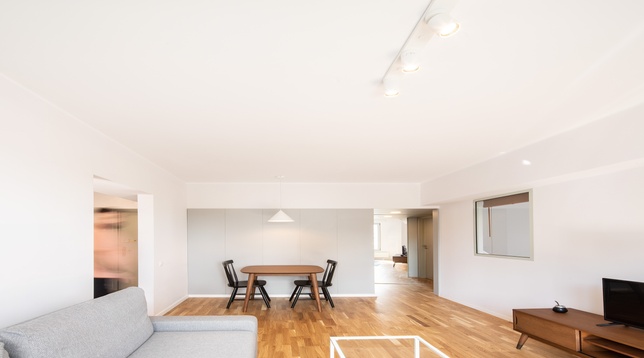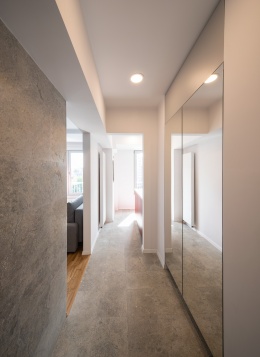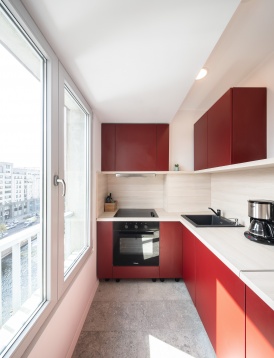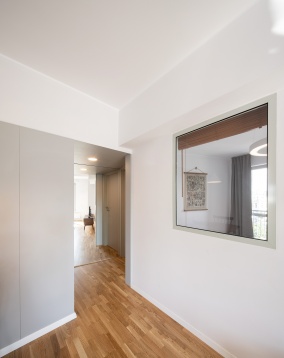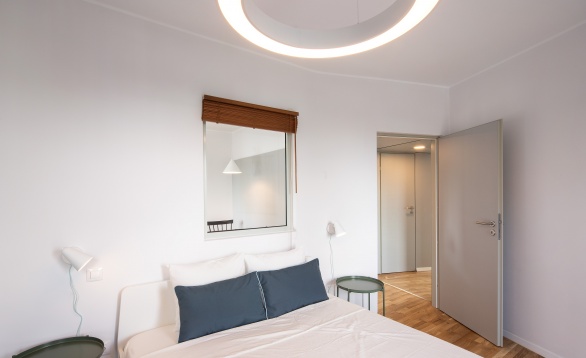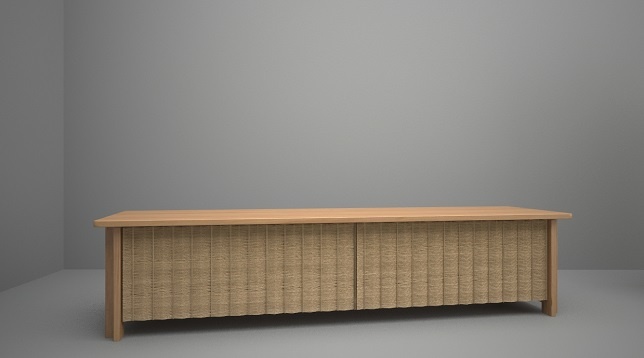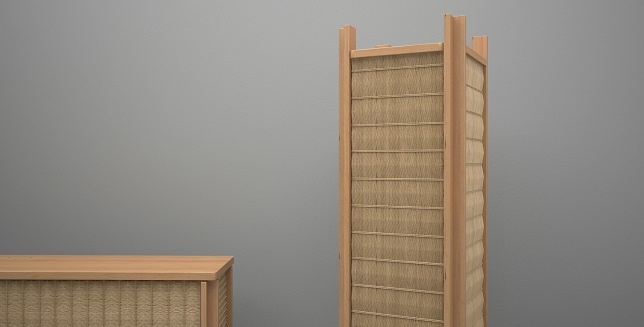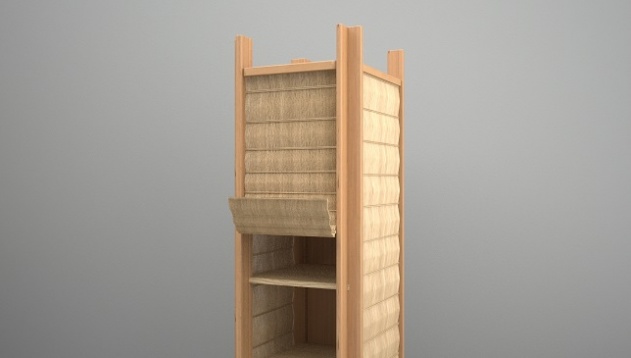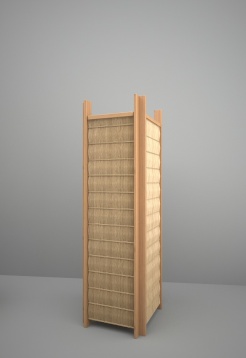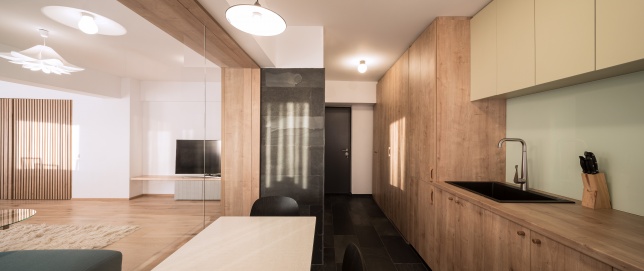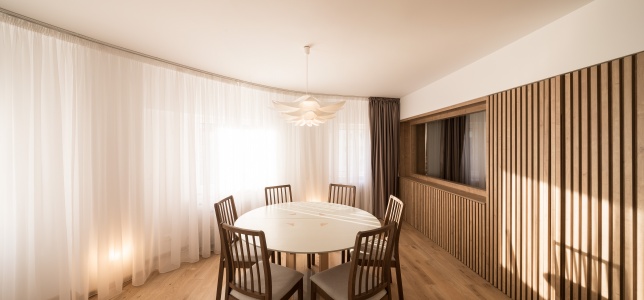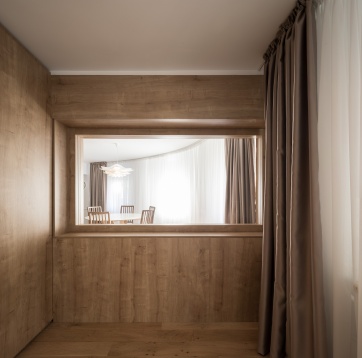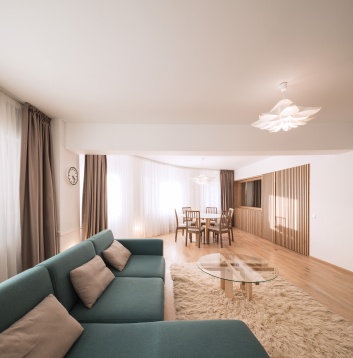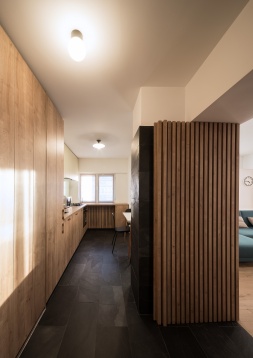HISTORY
vinklu is a collaborative project started by Stefan Pavaluta. It embodies the creative process in various dimensions of the architectural field: residential, cultural, historic, hospitality and object design.
SPECIFIC
The practice takes in the poetry of structure and aims to deliver a sincere, design-led architecture, well rooted in its context. The basis of each project has a research based approach, standing on reference, process, structure, space and mediation.
ROMANIAN DESIGN WEEK APPEARANCES
2019 // 112 Coffeehouse
Târgu-Mureș, the Palace of Culture ensemble. Ground floor of the former Mureș Pensions House, Viennese secession-style architecture, historic B class. A facade divided into three vertical registers, preserves the old carpentry of the building and allows for a visible interior-exterior connection. Both entrances are preserved and the facade becomes a mediation element. The interior consists of 2 spaces connected through a wall that joins the facade. The passage between them leaves the inner shell of the front, free. The access level is at the floor level. The rooms become a pocket to the street. The main function and access is self-defined through the gauge and the room section. The first and the smallest room hosts the reception, the espresso bar and the rest of the accessories, a storage behind the retro bar and one with a level above, represented by the height of the access tower, veneered with wood.
2019 // UN_APT
United Nations Square *, the 'columns' block ** or the 'portico' block.
The theme of the project was clear from the start: an Airbnb apartment *** in which the budget and accessorizing had to be minimized. From this point we defined the beneficiary as "universal" in the scenario where the apartment will be used by tourists of different nationalities and ages. At the same time, the context should not be ignored and the intervention should be subordinated to the existing architecture. The clear intention is to connect the spaces between them both at the finishing level and visually / volumetrically. The apartment allows a series of direct views, where you can see directly outdoors through another room, something less common in standard apartments. The useful area is approx. 48mp, a compact transit dwelling.
2019 // Weave Cabinet
The Weave Cabinet is a continuation of the project developed in collaboration with DeltaCraft, Weave Screen. Combining traditional techniques with contemporary processing of natural materials also gets an interactive dimension. Apart from the visual, opaque role, mats are used on the object in the same way as they are normally handled.
On the visible faces of a high storage module, they take over the role of doors and are fixed only to the top. They are left in position, just gravitationally, fastened with a small clamp at the bottom. To uncover the inside, the user breaks the clamp and runs the mat screen to the right shelf.
2018 // 10 MS
Two adjoining apartments, of 2 rooms, in a block of communist times, at the intersection between Calea Mosilor and Zece Mese street. The two apartments become single, joined by a central space, with the curved facade wall.
The first important aspect in the design process was the definition of a route that the tenant or guest can walk into this house. The main space (living and dining) is established as a nucleus that joins two parts. Access is made through the apartment from Zece Mese street. Having two fixed points - access and living - zoning is self-defining:
1) Entrance to the apartment ("fast" area) with access hall, kitchen;
2) Connected entrance guest area (bedroom, bathroom dressing);
3) Central core (living + dining room and balcony access);
4) Night area (dressing room, child's room, bathroom and bedroom).
vinklu is a collaborative project started by Stefan Pavaluta. It embodies the creative process in various dimensions of the architectural field: residential, cultural, historic, hospitality and object design.
SPECIFIC
The practice takes in the poetry of structure and aims to deliver a sincere, design-led architecture, well rooted in its context. The basis of each project has a research based approach, standing on reference, process, structure, space and mediation.
ROMANIAN DESIGN WEEK APPEARANCES
2019 // 112 Coffeehouse
Târgu-Mureș, the Palace of Culture ensemble. Ground floor of the former Mureș Pensions House, Viennese secession-style architecture, historic B class. A facade divided into three vertical registers, preserves the old carpentry of the building and allows for a visible interior-exterior connection. Both entrances are preserved and the facade becomes a mediation element. The interior consists of 2 spaces connected through a wall that joins the facade. The passage between them leaves the inner shell of the front, free. The access level is at the floor level. The rooms become a pocket to the street. The main function and access is self-defined through the gauge and the room section. The first and the smallest room hosts the reception, the espresso bar and the rest of the accessories, a storage behind the retro bar and one with a level above, represented by the height of the access tower, veneered with wood.
2019 // UN_APT
United Nations Square *, the 'columns' block ** or the 'portico' block.
The theme of the project was clear from the start: an Airbnb apartment *** in which the budget and accessorizing had to be minimized. From this point we defined the beneficiary as "universal" in the scenario where the apartment will be used by tourists of different nationalities and ages. At the same time, the context should not be ignored and the intervention should be subordinated to the existing architecture. The clear intention is to connect the spaces between them both at the finishing level and visually / volumetrically. The apartment allows a series of direct views, where you can see directly outdoors through another room, something less common in standard apartments. The useful area is approx. 48mp, a compact transit dwelling.
2019 // Weave Cabinet
The Weave Cabinet is a continuation of the project developed in collaboration with DeltaCraft, Weave Screen. Combining traditional techniques with contemporary processing of natural materials also gets an interactive dimension. Apart from the visual, opaque role, mats are used on the object in the same way as they are normally handled.
On the visible faces of a high storage module, they take over the role of doors and are fixed only to the top. They are left in position, just gravitationally, fastened with a small clamp at the bottom. To uncover the inside, the user breaks the clamp and runs the mat screen to the right shelf.
2018 // 10 MS
Two adjoining apartments, of 2 rooms, in a block of communist times, at the intersection between Calea Mosilor and Zece Mese street. The two apartments become single, joined by a central space, with the curved facade wall.
The first important aspect in the design process was the definition of a route that the tenant or guest can walk into this house. The main space (living and dining) is established as a nucleus that joins two parts. Access is made through the apartment from Zece Mese street. Having two fixed points - access and living - zoning is self-defining:
1) Entrance to the apartment ("fast" area) with access hall, kitchen;
2) Connected entrance guest area (bedroom, bathroom dressing);
3) Central core (living + dining room and balcony access);
4) Night area (dressing room, child's room, bathroom and bedroom).
















